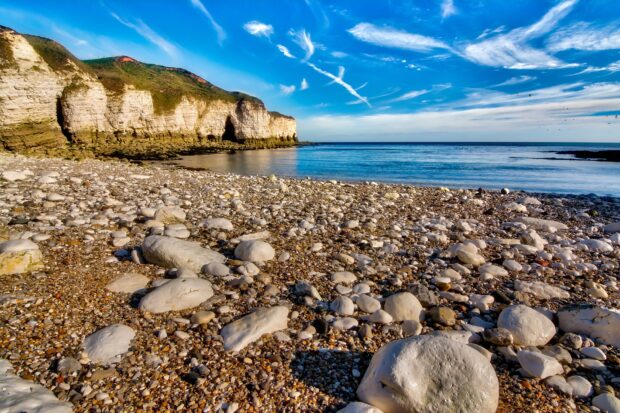
There has been extensive coverage across national and regional media around the high number of crab and lobster deaths that occurred in the North East last year, following the publication of a new study. It has yet to be peer reviewed or analysed by Defra and it agencies. Defra and its agencies carried out a comprehensive investigation into the incident which concluded that a naturally occurring algal bloom was the most likely cause of the crustacean deaths. However, the new study claims a toxic substance called pyridine, which could have been released by dredging, was more likely. It has been covered by BBC News, The Daily Mirror, The Independent, ITV News, Yorkshire Post and the Northern Echo.
This is a complex scientific issue. Defra welcomes and continues to support research carried out by universities and experts in the field and will be reviewing this research in full.
A Defra spokesperson said:
A comprehensive investigation last year included extensive testing for chemicals and other pollutants such as pyridine. It concluded a naturally occurring algal bloom was the most likely cause.
“We recognise the concerns in regards to dredging, but we found no evidence to suggest this was a likely cause. There have been no materials licensed for disposal at sea in the area which would fail to meet international standards.
“This is a complex scientific issue, which is why we took a thorough, evidence based approach. We welcome research carried out by universities and will continue to work with them, including studying this report carefully. We are aware there have been some localised reductions in catch rates and we are continuing to monitor shellfish populations in the area.
Why an algal bloom?
- Satellite data showed high values of algal bloom occurred in the area a week prior to the onset of the mortality event, including the likely presence of a species of Karenia which has previously been implicated in mass mortality events. A second algal bloom which produces toxins that cause diarrhetic shellfish poisoning (DSP) in shellfish consumers, was also present in the area.
Could it have been pyridine?
- The amount of any chemical needed to cause a mortality event of this scale would need to be huge and could not have escaped detection in the extensive sampling. Chemical pollution, including pyridine, was therefore ruled out as a likely cause for the incident in the Defra-led investigation. It is true that pyridine was detected in all the crab tissue samples, but this is expected as the pyridine molecule is part of essential biomolecules which is important for cellular processes. Pyridine was not detected in water samples taken during the incident in the affected area.
What about dredging?
- Dredging was also ruled out as a likely cause of the incident in the Defra led investigation. Dredged sediment must meet the highest international standards protecting marine life before it is permitted to be disposed of at sea. No materials have been licensed for disposal at sea in the area which would fail to meet international standards.
What’s happening to shellfish stocks now?
- A Tees and North Yorkshire stock monitoring report has been published online by the North Eastern IFCA on Thursday 29 September. Shellfish health monitoring undertaken during surveys encountered very low numbers of dead or symptomatic shellfish, suggesting no persistent health concerns remain at a regional level.
- The stock monitoring report also found, as the 2022 season has progressed, lobster landings at a regional level have increased in line with seasonal expectations. Edible crab landings and inshore catch rates remain depressed suggesting localised reductions in abundance persist. This supports anecdotal reports received from the industry through the first half of 2022. The report also highlights emergent trends in the offshore crab fishery targeted from Hartlepool by larger vessels from other UK ports.
2 comments
Comment by Katrina Hoogendam posted on
It may be that landings are from further afield rather than locally??
Comment by John W. Baxter posted on
I can recall when Northumbrian Water used to ship sewage sludge out into the North Sea for disposal by dumping from the barges , and when the incineration ship the Vulcanus used to incinerate toxic waste at sea in the North Sea, not knowing what happened to the by products of incineration, but based on the news I read about the monitoring of water courses in the U.K.,the permitted effluents from waste water treatment works and the poor quality of bathing water and the presence of algal blooms in the North Sea nothing surprises me anymore sadly.
The time has come to stand up and be responsible.....to be counted as a concerned and responsible being surrounded by life as fragile as ours.